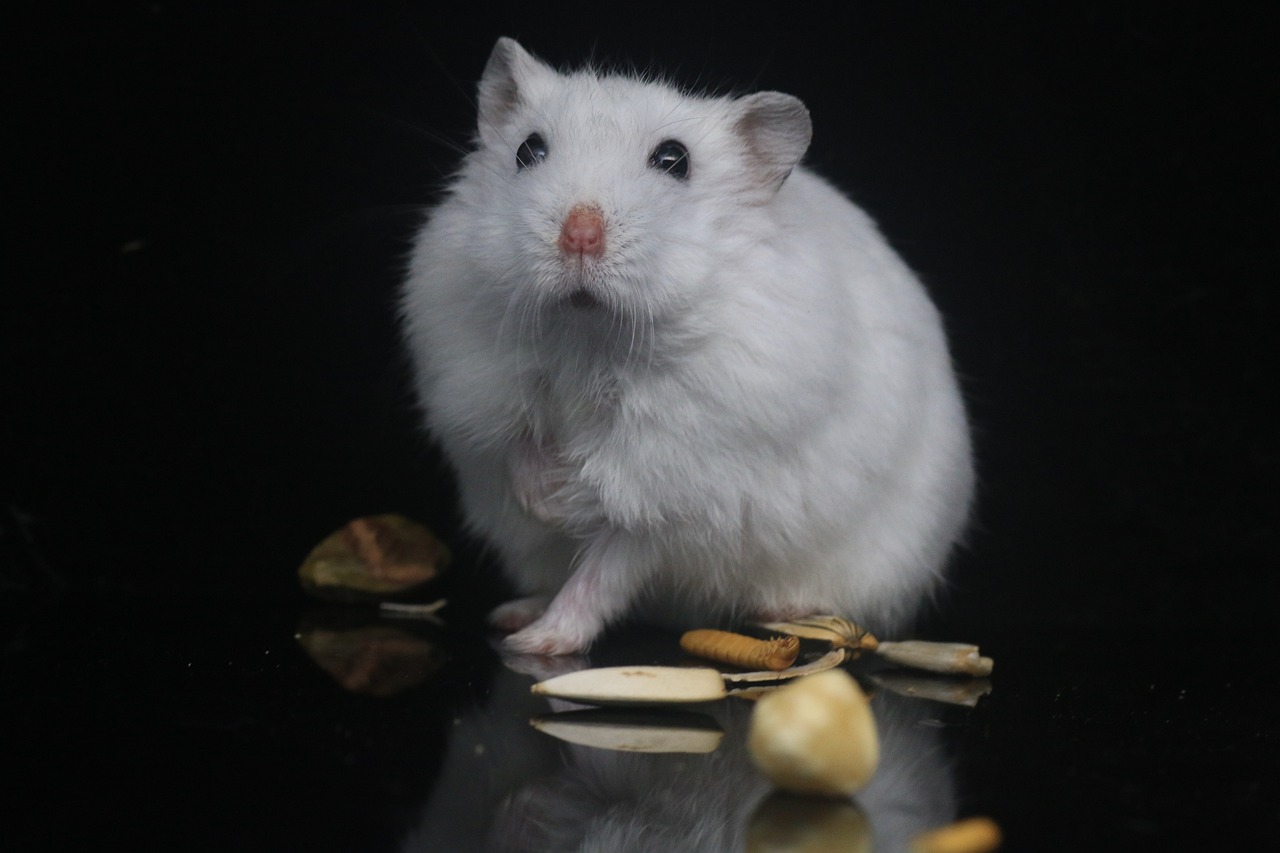The Syrian hamster is the most common pet species (Mesocricetus auratus) he’s the rodent that puts any human jogging schedule to shame! The hamster is a supreme runner, and the exercise wheel in his enclosure, or one of the modern hamster racing cars or exercise balls allows him to showcase his talents in your household If they are handled gently on a regular basis, they truly are fun, docile pets for a household.
Basic Biology
This rodent is a night animal so they do most of their feeding and exercise activities after sunset. They have been bred to express a wide variety of hair colors, hair lengths, and coat types. The longhaired variety is supposed to be the most gentle, but the socialization of any hamster has the largest impact on their personality. They are herbivores, which means that they will eat fruit, vegetables, seeds, and grassy foods. They use their monstrous cheek pouches to “hoard” their food and hide their seeds around their home.
The babies are only 2 g at birth and mature to an average of 110 g for the males and 130 g average for the females. They reach puberty at about 2 1/2 months. Pregnancy lasts only 2 1/2 weeks and the average litter is about 7-8 babies. A typical lifespan is about 1 1/2 to 2 years.
Housing
Hamsters really have it made with modern hamster condo options! Modern enclosures provide wonderful cubbies to snuggle in, and tunnels with plenty of turns and twists to explore. Plastic or metal exercise wheels are provided, and little sleeping and toilet enclosures with clear, or opaque lids (for privacy!) can be set around in the modern hamster house.
All this does not fix the fact that hamsters don’t like much company, so they are housed solo unless there is a breeding program underway. They are masters in the art of escape, so the enclosure hatch should be secure. A leak-proof water bottle should be offered on the side of the enclosure, and some sticks for chewing, and a salt block are offered in addition to the hamster chow/seed mix and hay. Aspen chips are preferred as a substrate for bedding. The environment should be kept very clean and dry to help prevent foot and leg problems.
The hamsters appreciate having their stashes of food left somewhat intact when the enclosure is cleaned.
Unfortunately, they often mix their droppings in, so dirty stashes should be cleared out.
Handling and Behaviour
This species benefits from regular gentle handling from the time they are weaned. Proper handling will lead to a contented hamster that will tolerate lots of activities. If they are awakened suddenly, or not accommodated to regular handling, they can roll over, yell, and deliver a nasty nip. They should be approached so that they are aware of your movements. For carrying or holding, they can be placed in a cupped hand, or loosely restrained over the body. The short tail should never be used as a lifting point.
Health Considerations
Though treats of fresh fruit, cereal, and grass are appropriate, avoid feeding large quantities of fresh water-rich food because diarrhea can result. Make sure that the bag of hamster chow does not sit around for more than 3-4 months because the vitamin E added to the diet during manufacture can degrade under prolonged storage, and this species is known to be prone to Vitamin E deficiency problems. The species is quite healthy by nature in general though.

